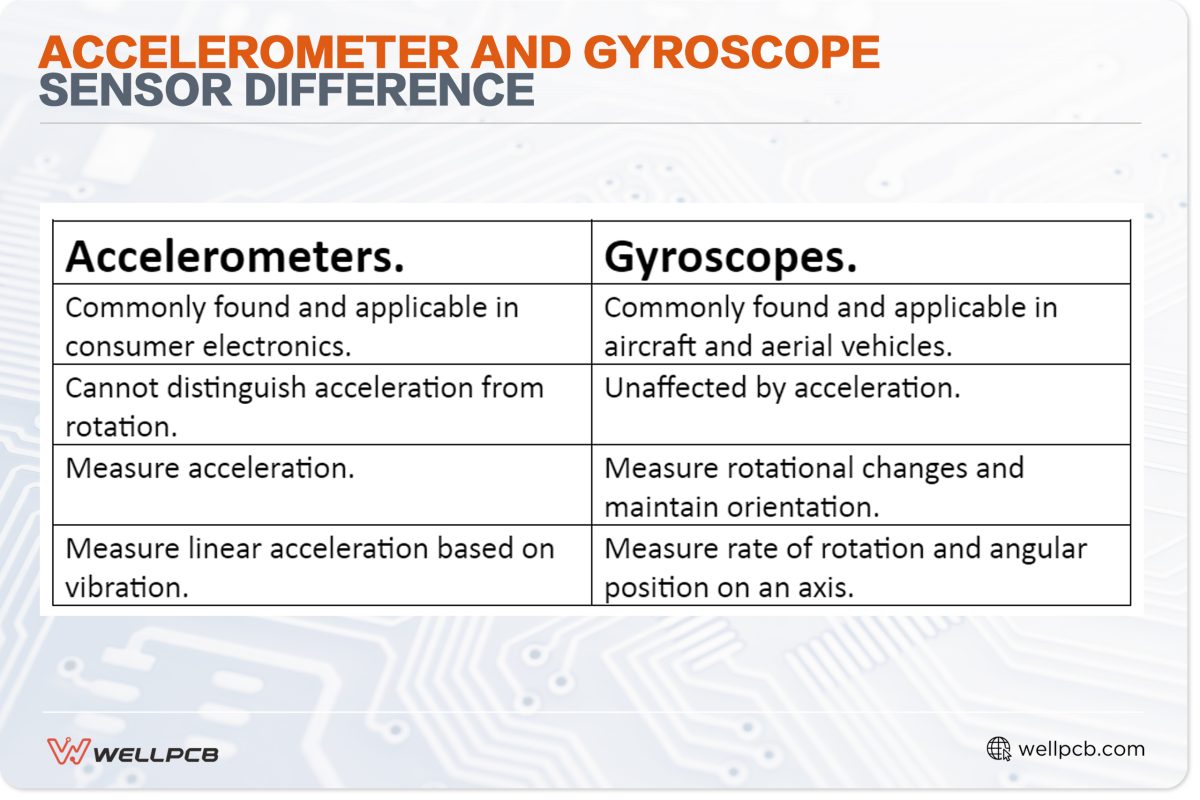Contents
What is a Gyroscope Sensor?
Gyro-sensors are also known as angular velocity sensors or angular rate sensors.
Consequently, the sensor consists of a disc and an axis of rotation, the latter of which presents the device’s orientation.
Particularly, they sense rotational motion and orientation that humans have difficulty sensing.
Notably, the principle is often applied in mobile games.
Smartphones, for instance, have gyroscopic senses that enable you to watch 360-degree photos and videos.

(gyroscope sensor)
Basic Components and Characteristics of Gyro Sensors.
Components
A gyroscope sensor consists of three major components, namely:

(spin axis)
Characteristics
Fixed Axis
The rotor’s center of gravity can be fixed. This phenomenon involves the directional stability of tGyroscope’se’s rotational axis in inertial space.
Furthermore, the stability of the tGyroscopeope also entails rotor resistance against the power of any change in the rotor axis.
Finally, fixed axis stability is affected by physical quantities as follows:
Precession
Precession refers to a change in the direction of the axis of a rotating object.
This phenomenon involves the direction of the external torque and the rotational angular velocity being perpendicular to each other.
This implies that, as the tGyroscopeope rotates in the inner axis of a high-speed rotor, the external torque acts on the outer ring axis and vice versa.
Factors affecting the size of the precession:
Types of Gyroscopic Sensors
Gyroscopes are available in different sizes and have different performances. Hence, the different types of gyroscopic sensors are classified as follows:
Ring Laser Gyroscope
A ring laser gyroscope measures rotation by determining the shifting interference pattern of separating beams in opposite directions. Moreover, it has two counter-propagating resonant modes on similar paths acting independently.
Fiber-Optic Gyroscope
A fiber-optic gyroscope uses light interference to detect and measure mechanical rotation. Like the ring laser gyroscope, it uses the Sagnac effect, which involves two halves of the split beam traveling in opposite directions in a coil of fiber optic cable.
Quantum Gyroscope
A quantum gyroscope is a sensitive device that measures angular rotation based on quantum mechanical properties. It uses superfluid material to detect the change in orientation between different moving bodies.
Vibration Gyroscope
A vibration gyroscope consists of a double T-structure element with a drive arm that rotates in a particular direction. It is effortless and often detects the rotation rate of moving bodies.
Ball-bearing frGyroscopeope
Ball-bearing gyroscopes use ball bearings widely for navigation purposes in ships and airplanes. Bearings are approximately 5mm in diameter and are usually located at the end of each rotor in a back-to-back configuration.
Liquid float Gyroscope
The liquid float gyroscope is integral to flight control, servo, and speed measuring systems.
Electrostatic Gyroscope
The electrostatGyroscopeope is a gimbal-less type mainly useful in spacecraft attitude reference systems. Recent studies have improved its accuracy and reliability for next-generation spacecraft.

(attitude reference system)
Flexible Gyroscope
A flexible gyroscope is an inertial element whose rotors are mostly mounted on an elastic support device. It consists of a flexible inner rod, a flexible outer rod, a motor, a rotor, and a driveshaft.
Laser Gyroscope
The laser gyroscope also uses the same principle as the Ring Laser Gyroscope, except it uses a rotating motor with a lower speed. Specifically, it uses laser technology to measure the angular velocity of an object relative to its inertial space.
MEMS Gyroscope
MEMS gyroscopes, also known as silicon microelectromechanical gyroscopes, use the Coriolis theorem to convert angular velocity into direct current voltage. The current is directly proportional to the angular velocity.
Gyroscope Sensor Working Principle
Gyroscope sensors operate on the principle of momentum and angular velocity. Therefore, it uses the three structures above to measure and detect the angular momentum. Thus, the rotor in the sensor rotates on a particular axis known as the gimbal.
The gimbals exist in a pair where one lies over the other and rotates in three angular directions:
Additionally, the gyroscope sensors use the Coriolis principle to measure the angular and sensor rotation rates, which are later converted into electric signals.
How to Choose a Gyroscope Sensor?
The following factors are used in choosing a suitable gyroscope sensor:
- Range – Smaller full-scale ranges give more precise readings due to higher sensitive output. Therefore, choose acceleration ranges that best fit your project.
- Interfaces—Many microcontrollers require analog interfaces for fixed-frequency production. However, digital interfaces are difficult to integrate with microcontrollers.
- Number of axes measured—The most common are 3-axis gyroscopes, less costly than 2- or 1-axis gyroscopes.
- Power usage- It is important to avoid over/underpowering based on your battery power consumption.
- Bonus features- They would include temperature output options.
Application of Gyroscope Sensor

(car navigation system)
Accelerometer and Gyroscope Sensor Difference.

Conclusion
That’s all for the comprehensive guide about gyroscopes. Hopefully, the relevant questions on their components, types, and how to choose specific ones will be answered. Also, if you have any questions, please ask us on our website.





